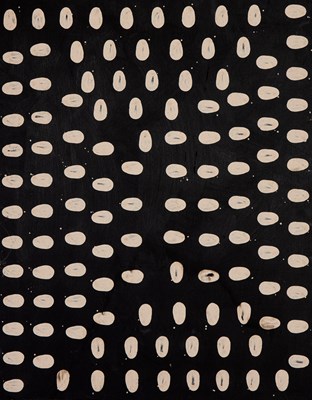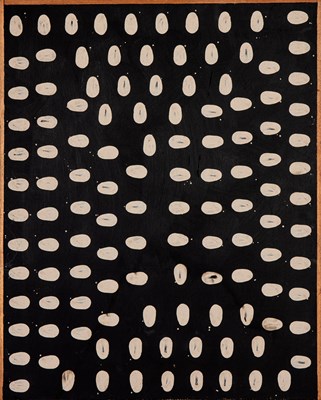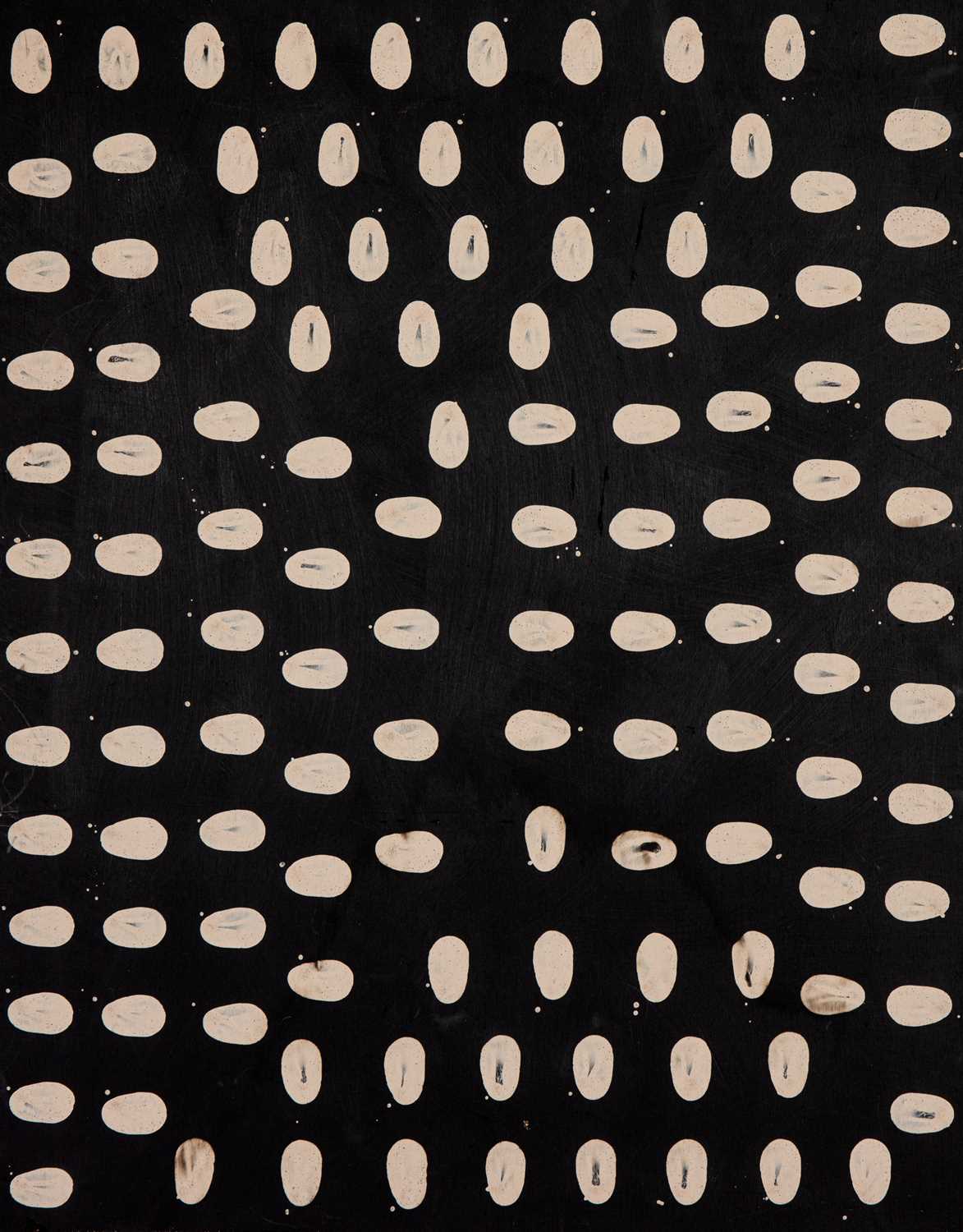13th Dec, 2023 12:00
Fine Paintings, Works on Paper & Sculpture
36
⊕ RICHARD LONG RA (BRITISH B.1945)
Property sold to Benefit Turner's House, Twickenham (lots 32-38)
Sandycombe Lodge, Turner’s House in Twickenham, offers a unique insight into the life and works of Britain’s greatest landscape painter, JMW Turner. Completed in 1813, Turner intended it as a quiet retreat, away from the pressures of the London art world; a place to which he would invite friends and indulge in his passion for fishing.
Some of the house's features reflect the influence of Turner's great friend and fellow fisherman Sir John Soane, who had built his own country property near by - Pitzhanger Manor in Ealing - just a few years earlier and was architect of the Bank of England and Dulwich Picture Gallery. But Turner was very much his own designer, his construction of Sandycombe Lodge revealing a lot about his ideal for living and, true to character, is typically idiosyncratic.
A private residence since Turner sold the house in 1826, its last owner, Professor Harold Livermore, lived there since 1947. Professor Livermore died in 2010, and in his will left the house in Trust, now Turner's House Trust. The Trust has since overseen its complete restoration, returning the property to how Turner had intended it, and recreating the quiet, domestic interiors that Turner would have known.
Since opening to the public in 2017, the house has hosted a series of critically acclaimed exhibitions that have shone new light on Turner’s life and art. The Trust also works closely with community organisations, offering programmes to alleviate mental and physical ill health.
Much of the funding for the house is from private donations, and the following seven lots by Richard Long and Peter Blake have been generously donated by the artists to raise funds to maintain the property and secure its future. To find out more about the house and how you can help support it visit www.turnershouse.org.uk.
RICHARD LONG RA (BRITISH B.1945)
RIVER AVON MUD FINGERPRINTS
signed and dated Richard Long 2014 on the reverse
mud finger prints on painted cupboard door
73 x 59cm; 28 3/4 x 23 1/4in
(unframed)
Provenance
A gift from the artist to Turner's House, Twickenham
In the present work, Long uses his index finger dipped in mud from the River Avon to make marks in lines which radiate from the centre. He says of his art: 'All my work is simple. I like the primal energy of just handprints or fingerprints. It's like cave painting.'
Born in Bristol, where he still lives, Long's work is based around walking and the direct experience of nature. While still a student at St Martin's School of Art in the mid-'60s he began making walks, photographing the traces he had made (the flattened grass, stones displaced, paths formed), or marking the course of the walk on a map. Long first used mud as a medium in 1969, describing it as 'a simple, direct natural material'. Later he began laying rocks or twigs in straight lines or circles, and then started reconstructing these works in interior settings, although the walk remained the basis for collecting the natural material.
Long represented Britain at the 37th Venice Biennale in 1976, and won the Turner Prize in 1989. He received the Chevalier de l'Ordre des Arts et des Lettres from the French Ministry of Culture in 1990, was elected a Royal Academician in 2001, and in 2009 was the recipient of the Praemium Imperiale for sculpture from Japan. He was awarded a Knighthood in 2018.
Sold for £8,000
Property sold to Benefit Turner's House, Twickenham (lots 32-38)
Sandycombe Lodge, Turner’s House in Twickenham, offers a unique insight into the life and works of Britain’s greatest landscape painter, JMW Turner. Completed in 1813, Turner intended it as a quiet retreat, away from the pressures of the London art world; a place to which he would invite friends and indulge in his passion for fishing.
Some of the house's features reflect the influence of Turner's great friend and fellow fisherman Sir John Soane, who had built his own country property near by - Pitzhanger Manor in Ealing - just a few years earlier and was architect of the Bank of England and Dulwich Picture Gallery. But Turner was very much his own designer, his construction of Sandycombe Lodge revealing a lot about his ideal for living and, true to character, is typically idiosyncratic.
A private residence since Turner sold the house in 1826, its last owner, Professor Harold Livermore, lived there since 1947. Professor Livermore died in 2010, and in his will left the house in Trust, now Turner's House Trust. The Trust has since overseen its complete restoration, returning the property to how Turner had intended it, and recreating the quiet, domestic interiors that Turner would have known.
Since opening to the public in 2017, the house has hosted a series of critically acclaimed exhibitions that have shone new light on Turner’s life and art. The Trust also works closely with community organisations, offering programmes to alleviate mental and physical ill health.
Much of the funding for the house is from private donations, and the following seven lots by Richard Long and Peter Blake have been generously donated by the artists to raise funds to maintain the property and secure its future. To find out more about the house and how you can help support it visit www.turnershouse.org.uk.
RICHARD LONG RA (BRITISH B.1945)
RIVER AVON MUD FINGERPRINTS
signed and dated Richard Long 2014 on the reverse
mud finger prints on painted cupboard door
73 x 59cm; 28 3/4 x 23 1/4in
(unframed)
Provenance
A gift from the artist to Turner's House, Twickenham
In the present work, Long uses his index finger dipped in mud from the River Avon to make marks in lines which radiate from the centre. He says of his art: 'All my work is simple. I like the primal energy of just handprints or fingerprints. It's like cave painting.'
Born in Bristol, where he still lives, Long's work is based around walking and the direct experience of nature. While still a student at St Martin's School of Art in the mid-'60s he began making walks, photographing the traces he had made (the flattened grass, stones displaced, paths formed), or marking the course of the walk on a map. Long first used mud as a medium in 1969, describing it as 'a simple, direct natural material'. Later he began laying rocks or twigs in straight lines or circles, and then started reconstructing these works in interior settings, although the walk remained the basis for collecting the natural material.
Long represented Britain at the 37th Venice Biennale in 1976, and won the Turner Prize in 1989. He received the Chevalier de l'Ordre des Arts et des Lettres from the French Ministry of Culture in 1990, was elected a Royal Academician in 2001, and in 2009 was the recipient of the Praemium Imperiale for sculpture from Japan. He was awarded a Knighthood in 2018.
Auction: Fine Paintings, Works on Paper & Sculpture, 13th Dec, 2023




